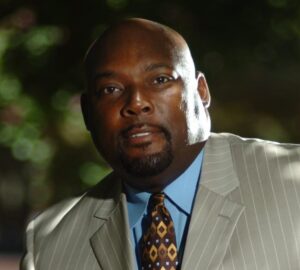
So this article might feel like a real doozy for some, but for me, it makes perfect sense and the reason why I decided to drop this article off on What’s Up is to stir the waters up juuuuuust a lil’ bit mo’. Over the years, I’ve come across some rather interesting interpretations about Frank Baum’s book ‘The Wizard of Oz’, which in my opinion is one of the greatest allegories ever written. Strange as it may sound upon first hearing, I guarantee that once you take time to really ponder the symbolism of the book, that what I’m about to share with you right now will make perfect sense later. So with that in mind, put on your thinking caps my peeps, because we’re going back to Kansas.
Keep in my mind that with my last article I discussed the difference between a democracy and a republic. With this article, part II, I felt that it would be a fitting follow up for me to refer to this beloved children’s story, though written in 1900, which holds profound symbolism related to the Federal Reserve Act of 1913 and its impact on this nation’s financial and political landscape. It’s documented history that after signing the Act, president Wilson stated, “The Federal Reserve Act, which I signed, allowed our system of credit to become too concentrated. The growth of the nation and all our activities are in the hands of a few men who, even if their action be honest and intended for the public interest, are necessarily concentrated upon the great undertakings in which their own money is involved. We have restricted credit, we have restricted opportunity, we have controlled development, and we have come to be one of the worst ruled, controlled and dominated governments in the civilized world—a government run by the opinion of small groups of dominant men.”
With the stroke of the president’s pen, the country was knowingly turned over to those whose interests are solely based on profit, even at the expense of culling the masses. The only way for us to stop this culling is to take our heads out of the sand, inform ourselves, organize and do the work required to recreate an environment where our human and natural rights prevail. So if you’re ready to challenge the status quo and stir yourself out of states of cognitive dissonance, embark with me on this journey further down the yellow brick road, as we briefly decode the hidden meanings behind the characters and elements of Oz, and how they relate to the realities imposed upon the people after president Woodrow Wilson ratified the Federal Reserve Act.
The Tin Man: Tax Identification Number (TIN)
The Tin Man, devoid of a heart, represents the dehumanization of the American workforce through the assignment of Tax Identification Numbers (TIN). These numbers, much like the Tin Man’s mechanical body, strip individuals of their humanity, reducing them to mere digits in the eyes of the federal government. The TIN symbolizes the faceless nature of our labor force, where personal identities are secondary to numerical identifiers used for taxation and control.
The Strawman: Ens Legis
The Scarecrow, or Strawman, embodies the legal fiction known in legalese as “ens legis.” In legal terms, this refers to an artificial person created by law, often used in the context of corporate entities or other non-living, legal constructs. The Strawman, lacking a brain, represents how these artificial entities operate under legal constraints without the capacity for independent thought or moral judgment, much like how citizens are sometimes viewed within the bureaucratic framework of modern governance, forced to work too hard to actually think and live.
The Cowardly Lion: The People
The Cowardly Lion symbolizes the people who, despite having the potential for great power and influence, often lack the courage to challenge the status quo. This character reflects the masses who are disheartened or intimidated by the political and economic systems in place, thus failing to voice their dissent, organize and assert their sovereignty to restore true constitutional governance.
Toto: The Revealer of Truth
Toto, meaning complete and whole, is the small dog who courageously explores beyond the confines of the obvious. This seemingly insignificant character plays a crucial role in revealing the true nature of the Wizard. This loyal companion represents the quest for truth and the unmasking of deception, something that seems insignificant to most who desire to live in the dreamstate of Emerald City. In our modern context, Toto symbolizes the investigative spirit needed to uncover the realities hidden behind political and financial veils of illusion.
Oz: The Illusory Power Structure
The Land of Oz itself represents the illusory nature of power structures that appear formidable but are ultimately built on deception and manipulation. Oz is a place where appearances are deceptive, much like the federal corporations that seem omnipotent but rely on public perception and compliance, while in reality are unconstitutional entities which are actually vulnerable structures when exposed in their true nature as legal corporate fictions.
The Yellow Brick Road: The Gold Standard
The Yellow Brick Road, leading to Emerald City, symbolizes the gold standard, which was once the foundation of our financial system. The journey along this road represents the nation’s historical reliance on gold as a measure of economic stability and value. Gold has historically been a cornerstone of economic security and stability due to its intrinsic value and scarcity. Unlike fiat currency, which can be printed at will, gold’s limited supply ensures it retains value over time, making it a reliable hedge against inflation and economic uncertainty. By anchoring monetary systems to gold, nations can foster confidence in their currencies, reduce the risks of hyperinflation, and promote long-term financial stability. Once the UNITED STATES decided to abandon gold as the standard of currency, the country immediately became subject to the printing machine of the bankers, which rid the country of the powers and US Treasury Department’s ability to mint money, which is a power reserved to the people.
Dorothy’s Silver Slippers: The Silver Unit of Money
In the book, Dorothy’s slippers are silver, not ruby as depicted in the film. These silver slippers represent the silver standard, which was a crucial component of the monetary policy debate in the late 19th and early 20th centuries. The silver standard, much like the gold standard, provided a tangible measure of value and economic stability. President John F. Kennedy’s Executive Order 11110, which authorized the issuance of silver certificates, was a significant move towards reestablishing a silver-backed currency. This order threatened the power of the Federal Reserve and is speculated to be one of the factors leading to his assassination, illustrating the dangers faced by those who challenge entrenched financial interests. When Dorothy clicked her heels and said “there’s no place like home,” her act represented the people’s desire to return to the silver standard which once made America’s economy stable and secure. Note that the Great Depression took place just a short sixteen years after the Federal Reserve Act.
The Poppies: Distractions and Addictions
The field of poppies that puts Dorothy and her companions to sleep represents the various distractions and addictions that keep the populace sedated and oblivious to the true nature of their enslavement. These distractions prevent people from reaching their goals and achieving true freedom.
The Flying Monkeys: Enforcers of Tyranny
The Wicked Witch’s flying monkeys symbolize the enforcement arms of oppressive apperatuses, whether they be financial, political or social. These entities act on behalf of those in power to maintain control and suppress dissent.
The Wicked Witch of the West: The Financial Oligarchy
The Wicked Witch of the West represents the financial oligarchy that wields significant power over the social, political and economic systems. Her demise signifies the potential overthrow of these oppressive forces by the determined and awakened populace.
The Good Witch of the East: Enlightened Leadership
In contrast, the Good Witch of the East symbolizes enlightened leadership that seeks to empower and liberate the people based on the principles and teachings of the East. This figure represents the hope for a governance model that is just, fair, and truly representative of the people’s will.
The Wizard: The Illusion of Authority
The Wizard, who is ultimately revealed to be an ordinary man behind a curtain, epitomizes the illusion of authority. This character demonstrates how those in power often rely on grandiose displays and deception to maintain their control, rather than genuine capability or legitimacy.
Dorothy: The Unwitting Participant
Dorothy’s journey from Kansas to Oz and back symbolizes the transition from reality to a fabricated existence and the eventual awakening to the truth. Her realization that she is no longer in “Kansas” but in “KANSAS” (an incorporated state rather than a true republic) reflects the shift from a republic grounded in individual sovereignty to a corporate-controlled democracy.
The Remedy: Restoring Popular Sovereignty
To remedy the situation created by many Acts and policies passed, we must reconnect with the foundational principles of this republic. Here are several steps to consider:
1. Educate and Empower: Knowledge is power in potential. We must educate ourselves and others about the distinctions between the de facto corporate governance and the de jure constitutional republic. Understanding the historical and legal contexts is crucial.
2. Reclaim Legal Identity: Challenge the ens legis status by reclaiming our individual sovereignty. This involves understanding and asserting our rights as natural persons under the original Constitution and filing the proper paperwork to take control of your corporate legal fiction. For more information look up Cestui Que Vie Trust.
3. Organize and Advocate: Courageously organize and advocate for the restoration of the human rights, civil liberties and the gold standard (or a similarly stable economic system) that resists manipulation by powerful financial interests. This is where our applied knowledge becomes power.
4. Amend the Constitution: Push for constitutional amendments that reinforce the limitations on federal power and restore economic and the popular sovereignty. This includes advocating for the repeal of the 16th Amendment, which allows the federal government to levy income taxes, thereby perpetuating financial control over individuals.
5. Challenge Unconstitutional Laws: Use legal avenues to challenge and overturn laws and regulations that infringe upon our constitutional rights under the color of law. This requires a thorough understanding of US codes and federal regulations to identify and contest overreach.
Considering the symbolism in ‘The Wizard of Oz’ it should be apparent that the book offers a poignant allegory for the transformations and challenges posed by such legislation as the Federal Reserve Act of 1913. By understanding these symbols and their implications, we can begin to chart a course back to a republic that truly represents and serves the people. The journey may be arduous, but with love, unity and collective action (bloc voting and group economics), we can reclaim our sovereignty and restore the principles of the true principles of this country’s founding.
[email protected]


